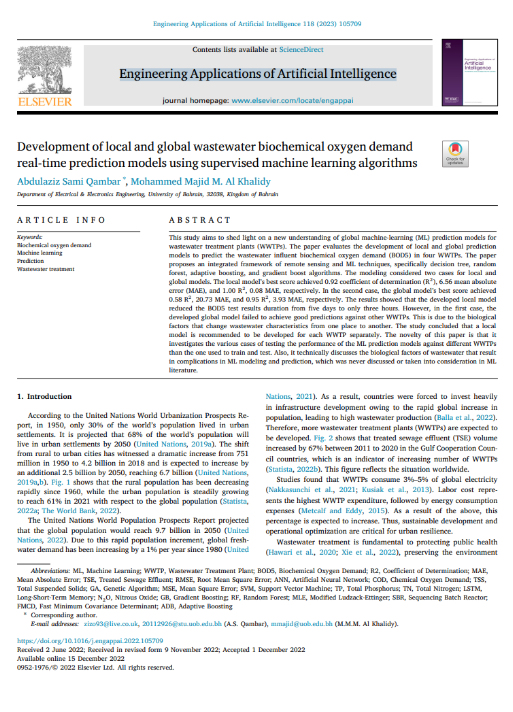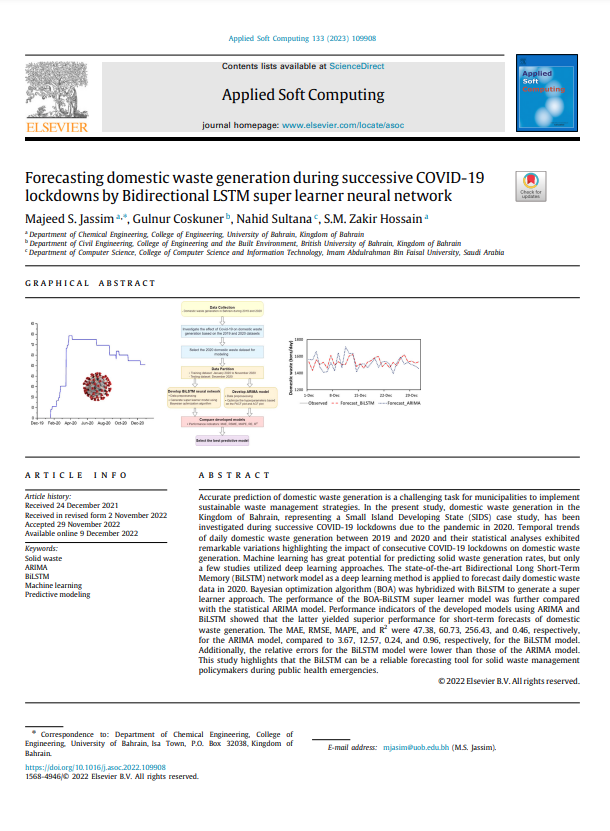Document
Aerodynamic Analyses of Airfoils Using Machine Learning as an Alternative to RANS Simulation
Linked Agent
Kamal, K.;, Author
Ratlamwala, T.A.H;, Author
; Mathavan, S.;, Abridger
Hussain, G.;, Author
Alkahtani, M.;, Author
Alsultan, M.B.M;, Author
Title of Periodical
Applied Sciences (Switzerland)
Country of Publication
Kingdom of Bahrain
Place Published
Sakhir, Bahrain
Publisher
University of Bahrain
Date Issued
2022
Language
English
Subject
English Abstract
Abstract:
The accurate prediction of aerodynamic properties is an essential requirement for the
design of applications that involve fluid flows, especially in the aerospace industry. The aerodynamic
characteristics of fluid flows around a wing or an airfoil are usually forecasted using the numerical
solution of the Reynolds-averaged Navier–Stokes equation. However, very heavy computational
expenses and lengthy progression intervals are associated with this method. Advancements in
computational power and efficiency throughout the present era have considerably reduced these
costs; however, for many practical applications, performing numerical simulations is still a very
computationally expensive and time-consuming task. The application of machine learning techniques
has seen a sharp rise in various fields over recent years, including fluid dynamics, and they have
proved their worth. In the present study, a famous machine learning model that is known as the backpropagation neural network was implemented for the prediction of the aerodynamic coefficients of
airfoils. The most important aerodynamic properties of the coefficient of lift and the coefficient of drag
were predicted by providing the model with the name, flow Reynolds number, Mach number and
the angle of attack of the airfoils with respect to the incoming flows as input parameters. The dataset
for the current study was obtained by performing CFD simulations using the RANS-based Spalart–
Allmaras turbulence model on four different NACA series airfoils under varying aerodynamic
conditions. The data that were obtained from the CFD simulations were divided into two subsets:
70% were used as training data and the remaining 30% were used as validation and testing data.
The BPNN showed promising results for the prediction of the aerodynamic coefficients of airfoils
under different conditions. An RMSE value of 3.57 × 10−7 was achieved for the best performance
validation case with 28 epochs when there were 10 neurons in the hidden layer. The regression plot
also depicted a close to perfect fit between the predicted and actual values for the regression curves.
Member of
Identifier
https://digitalrepository.uob.edu.bh/id/e0dade99-cbb0-4363-bac2-76851ff3fff2
Same Subject

